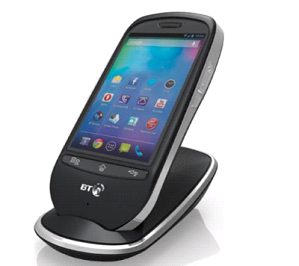American households that prefer to use landlines over the new age cellphones are slowly switching over to the updated and stylish versions of the traditional home phone. Some are even combining their home phone and mobile phone into a single smart device. But what’s all this about?
With the Android-powered home phone released by Panasonic last year, the transition from the old to the new has become even more appealing to the masses. This phone has all of the features of a smart mobile phone (internet access, apps, etc.), but also gives the user the option of calling from either a mobile or landline technology. When the user is away from home, they can use the device as a mobile 3G/GSM device and on returning home, they have the option of using either the mobile or the landline system to make calls. This smart home phone also displays any calls or messages the user might have missed while they were away. Following suit, many other companies have released their own versions of smart landline phones because of the success this concept has achieved.
For years, landlines have been the primary medium of electronic communication. However with the advent of cell phones, people instantaneously began shifting gears to go wireless, parting ways with the landline. Why then, are phone companies continuing to make new and innovative developments in home phone technology? For starters, the smart landline phone offers some very useful features. When you’re at home with your Android home phone, you can make a choice between the most affordable means of making a call—landline or mobile—without having to handle a separate device for your choice. The smart landline phone is also more portable, which prevents the chaotic search for the phone around the house when it starts buzzing.
Now, the archaic landline is no longer looked upon with its cumbersome history of cords and wires. These new smart home phones are giving the technology a dramatic boost in modern style. Whether the revival of the landline will happen based on devices like this is for the consumers to decide. However, this new technological advancement is surely giving landline technology another chance.



